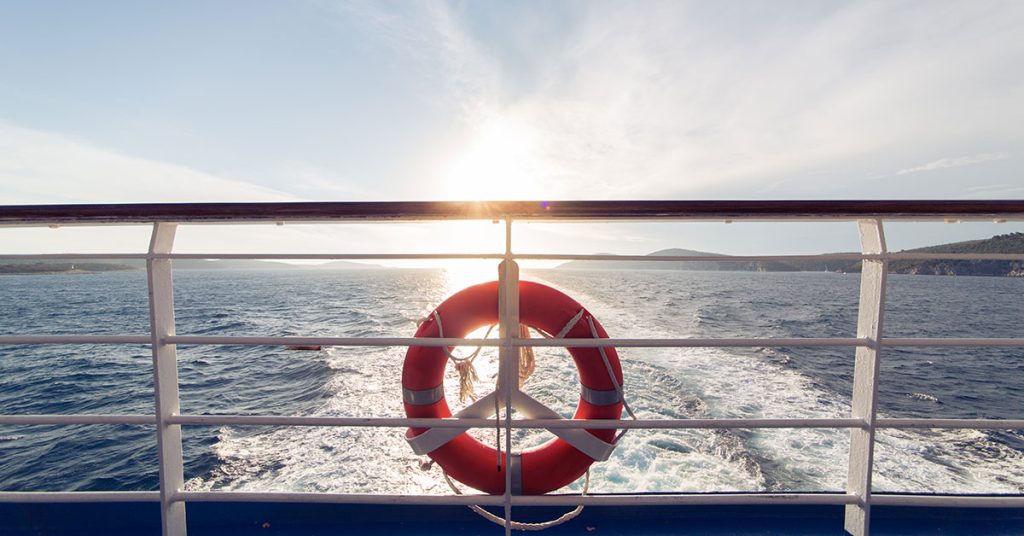In an era of swift advancements in maritime engineering, cruise ships are on a path to immense growth. With projections of accommodating over 10,000 passengers by 2050, the cruise industry is set for monumental changes.
A recent study sheds light on the potential environmental implications as these floating cities continue to grow. While promising enhanced travel experiences, they also spotlight rising concerns over greenhouse gas emissions.
The Evolution of Cruise Vessels
Cruise ships have seen a monumental transformation over the decades. From modest vessels with limited capacity, they have evolved into grand floating resorts. As per a recent study, these ‘cruisezilla’ ships may accommodate as many as 10,500 passengers by the year 2050. This reflects a dramatic shift in scale and ambition for the cruise industry.
Royal Caribbean International is at the forefront of this expansion with its Icon of the Seas, accommodating up to 7,600 guests. Weighing almost 250,000 gross tonnes, it illustrates the growing trend of larger vessels. Industry forecast suggests a significant increase in ship sizes, with the possibility of ships reaching 345,000 gross tonnes within the next 25 years.
Environmental Impact and Concerns
Despite the allure of bigger ships and their enhanced offerings, there are environmental repercussions to consider. The study highlights that as the cruise industry flourishes, so do its greenhouse gas emissions. From 2019 to 2022, CO2 emissions from cruise ships in Europe surged by 17%. Furthermore, methane emissions soared by an extraordinary 500%, underscoring the urgent need for action.
These emissions have sparked a call from environmental groups, such as Transport & Environment (T&E), urging the industry to prioritise green technologies. While some cruise lines are adopting Liquefied Natural Gas (LNG) as a cleaner alternative to traditional fuel, T&E warns that it is not without its own set of environmental challenges. Methane slips from LNG engines could be more harmful than the emissions from older fuel types.
Adoption of Green Technologies
In response to environmental concerns, the cruise industry is beginning to explore sustainable alternatives. Green e-fuels emerge as a potential solution, capable of powering nearly 4% of European shipping by 2030. This transition poses logistical challenges, but cruise ships’ predictable routes make them suitable candidates for alternative fuel adoption.
Despite the promise of e-fuels, their limited availability and underdeveloped infrastructure pose significant hurdles. However, due to the predictable nature of cruise routes, planning refuelling becomes more manageable, offering a glimpse of hope for integrating sustainable practices. Investing in these technologies could significantly mitigate the environmental impact while catering to the burgeoning demand for cruise travel.
Economic Implications of Cruise Industry Growth
The economic benefits of the expanding cruise industry are undeniable, with the potential to boost local economies through increased tourism. Nevertheless, this growth comes at a cost. Existing tax exemptions for cruise lines, including exemptions from fuel duties and corporate taxes, present a fiscal challenge. A proposal for a €50 ticket tax aims to generate €1.6 billion globally, channelling much-needed funds towards climate aid.
Introducing such taxes could play a pivotal role in ensuring that luxury tourism forms bear their share of environmental responsibilities. By doing so, the cruise industry could contribute to a more sustainable future, balancing economic expansion with ecological considerations.
The Future of Cruise Travel
The cruise industry continues to thrive, with projections indicating nearly 36 million holidaymakers embarking on cruise voyages in 2024 alone. As cruise travel becomes increasingly mainstream, questions concerning the sector’s sustainability resurface. The environmental footprint of these colossal vessels necessitates a shift towards more sustainable practices.
Advocates argue that the industry’s willingness to embrace green technologies is crucial for maintaining public favour. Failure to do so could see cruise companies facing increasing resistance from concerned communities and pressure from environmental advocates. Embracing innovations will be essential in transforming the cruise industry into a responsible and sustainable mode of travel.
Stakeholder Perspectives
According to Inesa Ulichina, T&E’s sustainable shipping officer, the cruise industry needs to take significant responsibility for its environmental impact. She boldly states, “Today’s cruisezillas make the Titanic look like a small fishing boat. How much bigger can these giants get?” Her call for accountability signifies an industry at a crossroads.
The fast-paced growth of the cruise industry challenges stakeholders to innovate and enhance sustainability. Prominent players in the sector voice their support for these green initiatives, recognising them as vital for the industry’s long-term survival. The collective involvement of cruise operators, environmental bodies, and policymakers is imperative to achieve meaningful progress.
Conclusion: Navigating Towards Sustainability
The cruise industry stands at a decisive moment, faced with both tremendous growth opportunities and environmental responsibilities. The need for sustainable solutions is clear as the demand for cruises continues to expand. By investing in green technologies and reconsidering fiscal policies, the cruise sector can continue to delight passengers while mitigating its environmental impact.
In conclusion, the cruise industry’s future is one of balance between growth and sustainability. Investing in cleaner technologies and eco-friendly policies will be key to navigating this journey.

